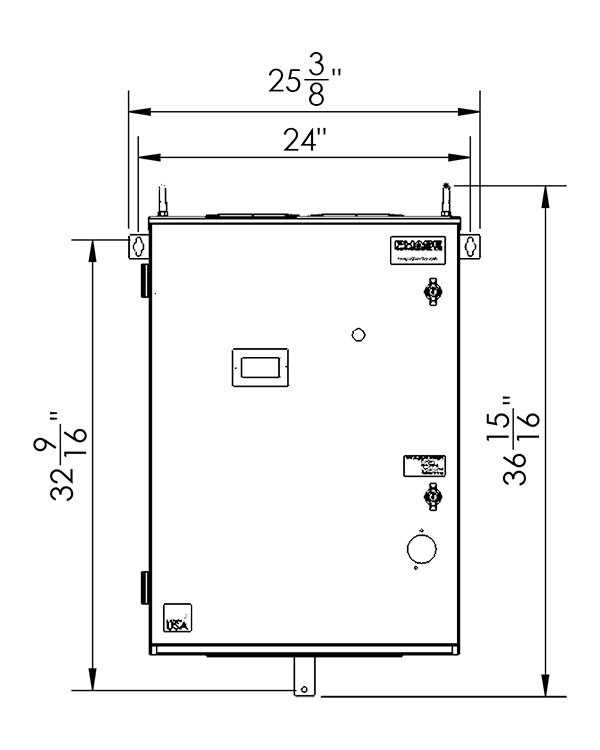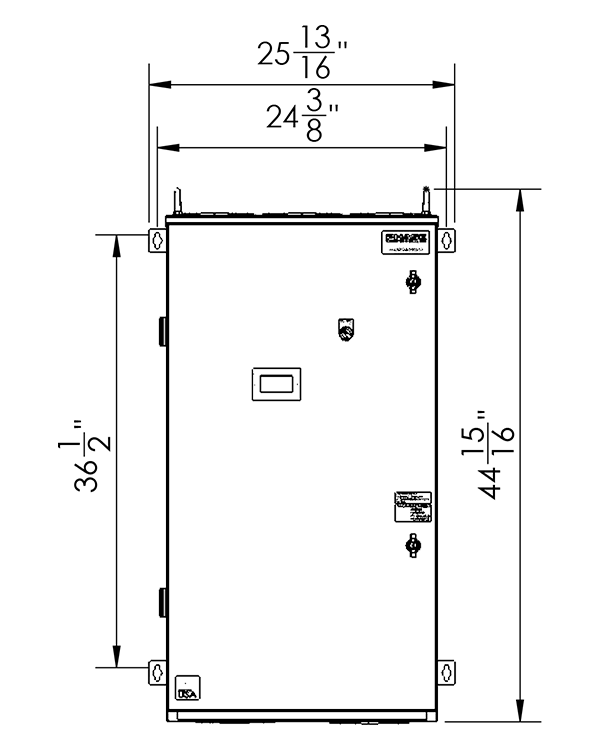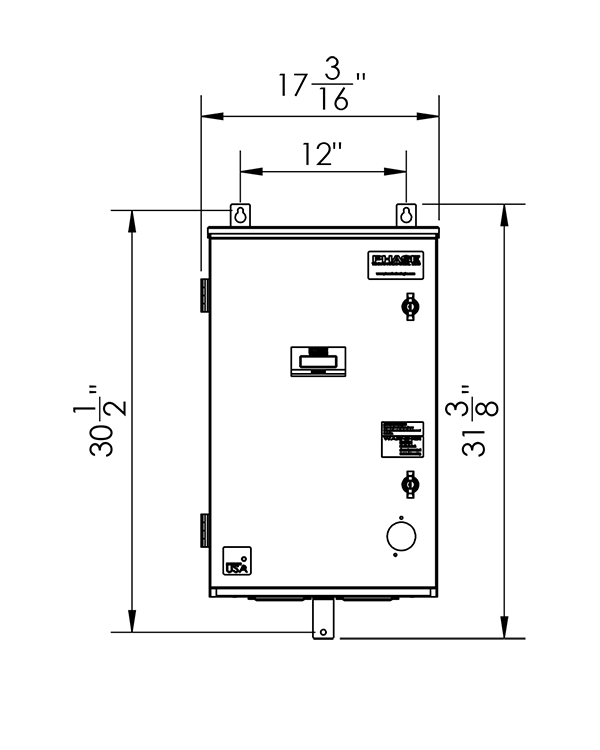
Phase Perfect - Quick Start Guide Installation
Standard Chassis Models
Mounting the Phase Perfect®
- Attach mounting brackets to back of unit with supplied hardware.
- Using the mounting brackets, attach the unit to a solid, non-flammable surface.
- Ensure air intake and exhaust openings are not obstructed. If mounted in a small room or cabinet, ensure temperature will remain below 50C (122F). Notes: 18" (450mm) clearance below and 6" (150mm) around required for ventilation. NEMA 3R chassis or add-on necessary for exterior or dusty installation.
Connect Wiring
- Unlatch and open the door.
- Route cables through the supplied openings in the bottom of the enclosure, using appropriate conduit or strain relief devices.
Note: Continuous metal conduit should be used for all power cables to reduce radiated electromagnetic interference (EMI). - Install the 3 load side conductors into the output terminals labeled T1, T2, and T3. Connect the load side ground conductor into the grounding terminal. Note: T3 is the manufactured leg.
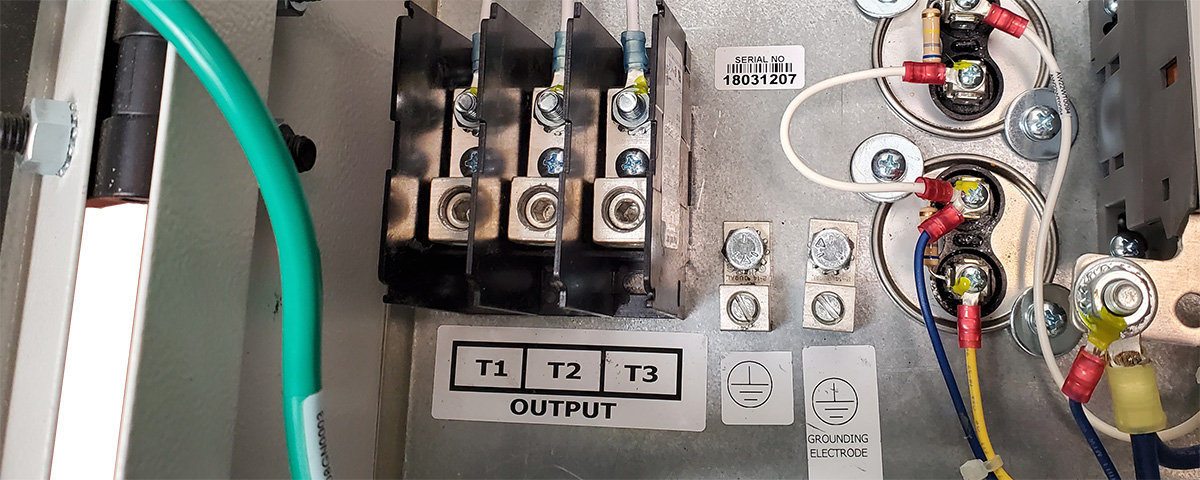
Suggested Breaker Sizes
| PT407 | PT410 | PT007, 415 | PT420 | PT010 | PT430 | PT020 |
| 30A | 40A | 60A | 70A | 80A | 100A | 150A |
Suggested Breaker Sizes (cont.)
| PT450 | PT460 | PT030 | PT475 | PT040 | PT050, 4100 | PT060 | PT075 |
| 175A | 200A | 225A | 250A | 300A | 400A | 450A | 600A |
-
Properly ground the phase converter according to local electrical code. Connect the ground lug to the branch circuit or service ground conductor.

- Connect the line side input leads into the terminal labeled L1 and L2.
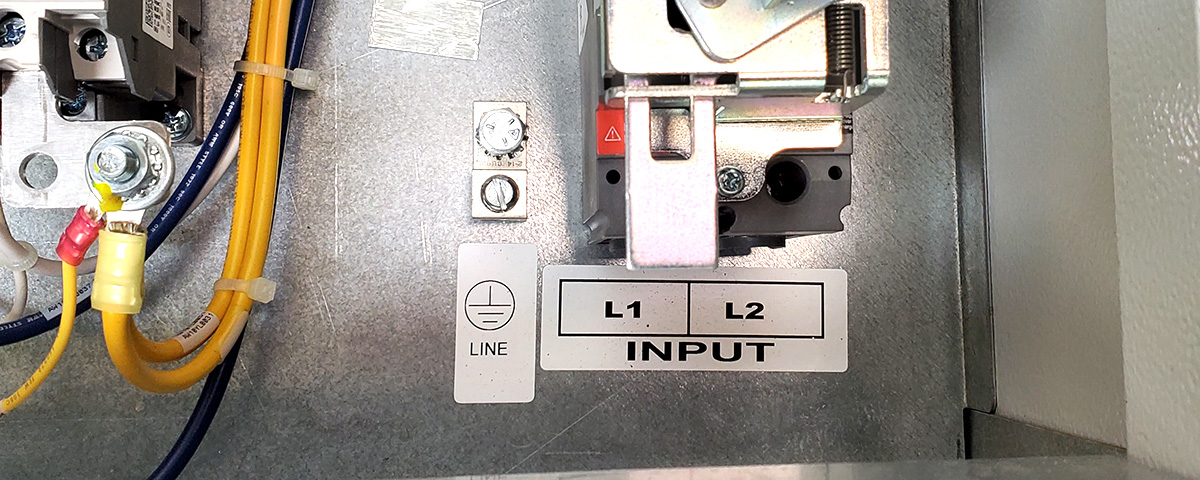
- To add an external run/stop switch, remove the orange jumper wire and connect the switch to AUX1 and COM terminals. Caution: No voltage may be introduced on these terminals. Dry contact only.
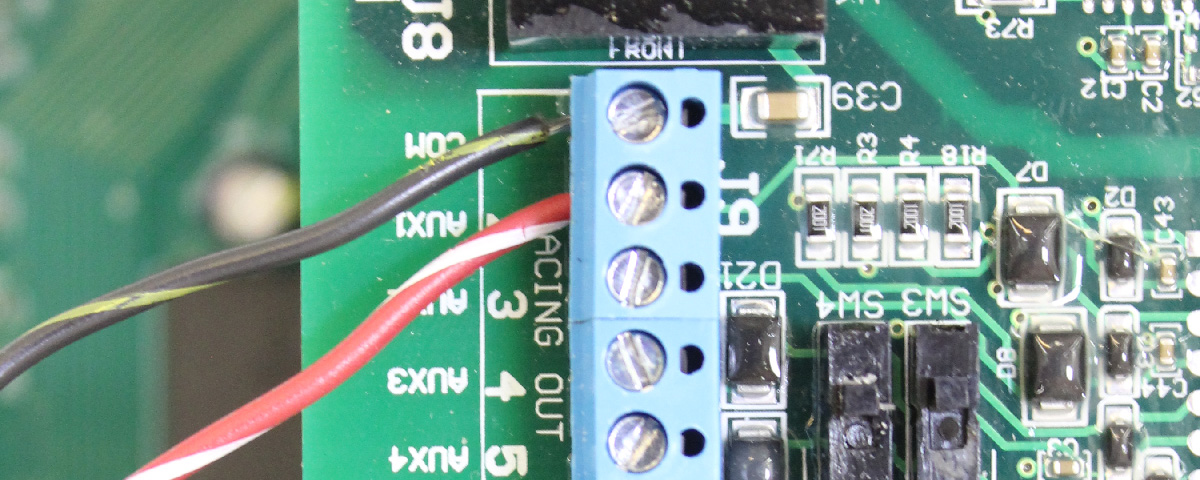
Powering up the Phase Perfect®
- Close and latch the door.
- Turn on the line side breaker and verify screen turns on. Note: Once the unit is fully energized the internal contactor will pull in. Once this occurs a light sizzling noise will be emitted, and is normal.
